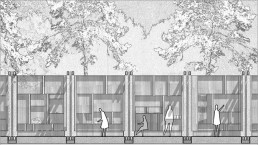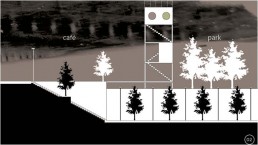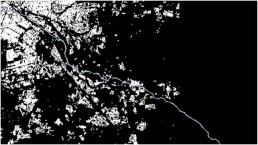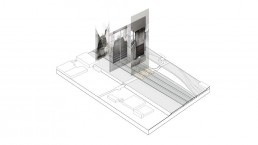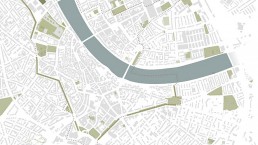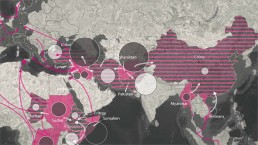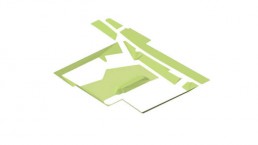TIMESPACE
MASTER THESIS
WS 17/18
Infrastructures have become the basis of our civilisation in almost all areas of everyday life. It has given them an importance as a basis of life that we are only rarely aware of. This master‘s thesis deals with the topic of infrastructures and examines the relationship of these to the surrounding landscape and which process systems take place behind the facades.
The area and infrastructure of investigation are the Kiel Canal. It runs in northern Germany from Brunsbüttel to Kiel, linking the North Sea and the Baltic economic zones by sea.
At the moment the Kiel Canal is being extended due to growing economic interests in the eastern area of Schleswig Holstein in order to increase the efficiency of freight transportation and merchandise. In order to maintain and increase the optimal use of the artificial waterway in future, the canal will be deepened along its entire length. This extension measures generate large amounts of soil, which need be removed from the canal and redistributed. This describes the initial situation and problem definition of the present work on the basis of the following questions: From a landscape architectural view, where is there potential to create infrastructures that can be useful for the surrounding landscape and people beyond their purely functional purpose? How can this integration be achieved applying the example of the Kiel Canal and what design opportunities are possible for the expansion of the Kiel Canal?
In order to clarify these questions, a theoretical analysis defines the connection between infrastructure planning and landscape architecture and shows approaches and potentials. The subsequent analysis examines the Kiel Canal as an infrastructure in its entirety and takes a closer look at its functioning and integration into the surrounding at various levels. A brief insight into the history of the Kiel Canal outlines the idea and dimension of the intervention in the landscape and how the excavations have been dealt with so far. Building on the previous processes for the deepening from Rendsburg to Kiel will be examined in more detail by analysing individual time layers. Subsequently, the methods of soil removal and application used in the current expansion are described. For further consideration of the handling of the excavated material, this soil represent the design material which subsequently will be used to form excavations and fills related to the new design.
The design will precede a concept that explains the integration of three designs into the region and the canal surroundings. It also shows the functions of the newly created added value of the individual intervention. While presenting the designs, it becomes clear that a comprehensive understanding of infrastructure and its functional structures is necessary to be able to offer adequate solutions for the adjacent areas of infrastructures. Furthermore, it becomes clear that the effects of infrastructures can lead to mutually positively influencing symbioses under the comprehensive consideration of the basic requirements of the locations and demands of the infrastructure on the room. Landscape architecture can, under the condition of opening even more to the topic of infrastructures and establish itself in this technically shaped field, become a competent mediator between the disciplines through its basically interdisciplinary planning culture.
| Author/s | Lukas Merkel |
| Phase | Thesis |
| Location | Nord-Ostsee-Kanal |
| Categories | Waterfront, Thesis |
